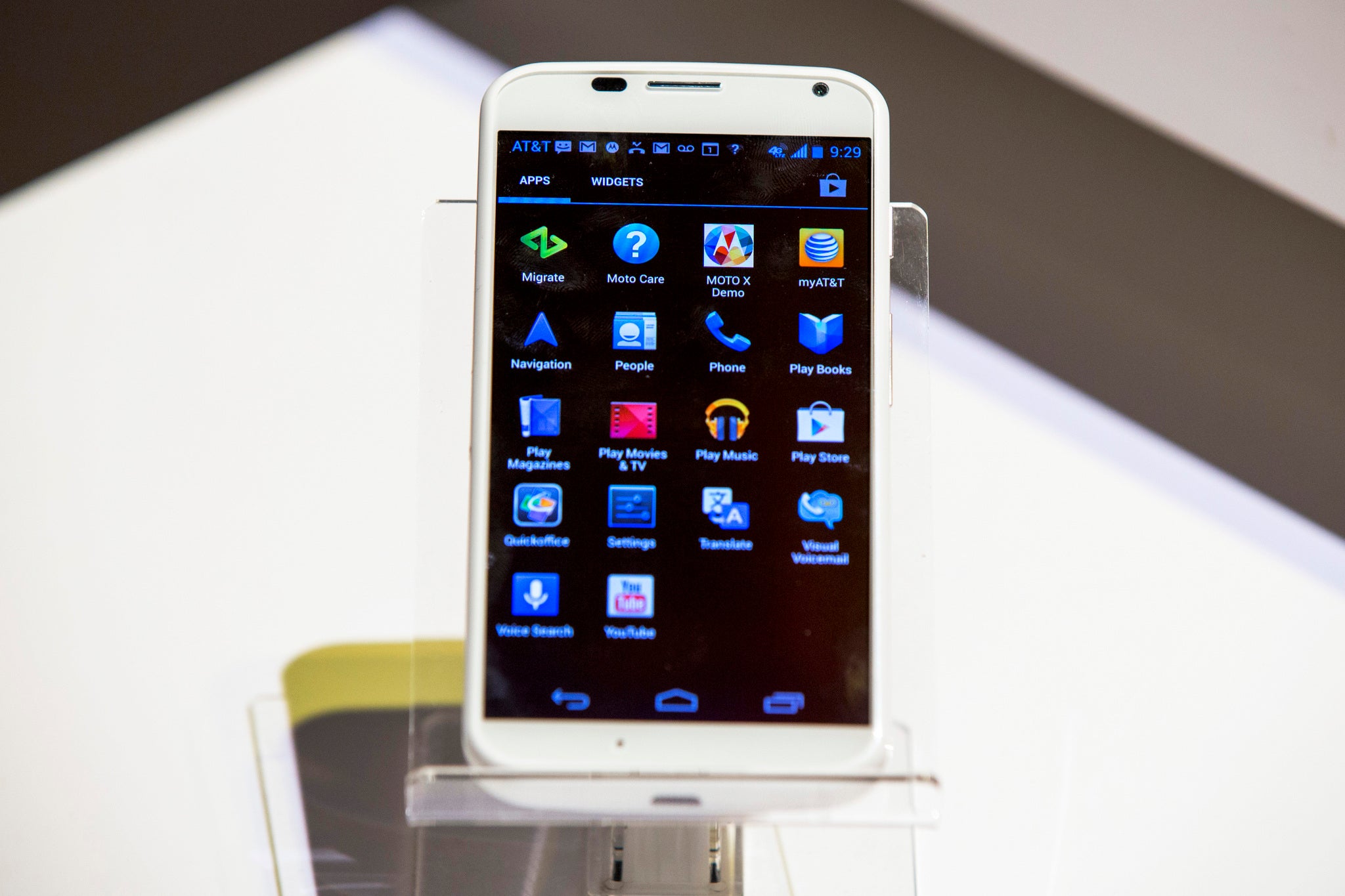Moto X: Google's 'always on' phone that offers you Google Glass for cheap
The new handset is trained to recognise its owner's voice and answer queries, make calls and search the web
.jpg)
Your support helps us to tell the story
From reproductive rights to climate change to Big Tech, The Independent is on the ground when the story is developing. Whether it's investigating the financials of Elon Musk's pro-Trump PAC or producing our latest documentary, 'The A Word', which shines a light on the American women fighting for reproductive rights, we know how important it is to parse out the facts from the messaging.
At such a critical moment in US history, we need reporters on the ground. Your donation allows us to keep sending journalists to speak to both sides of the story.
The Independent is trusted by Americans across the entire political spectrum. And unlike many other quality news outlets, we choose not to lock Americans out of our reporting and analysis with paywalls. We believe quality journalism should be available to everyone, paid for by those who can afford it.
Your support makes all the difference.Google have unveiled an ‘always-on’ smartphone named the Moto X. The new handset is trained to recognise its owner's voice and respond to voice commands at any time.
The handset responds to the phrase ‘OK Google now’ which wakes the phone without the user having to touch the screen. From this point individuals can carry out a range of tasks including searching the web, making calls or finding driving directions.
Google say that this feature helps users “get everyday tasks done quickly and with less fuss,” with Motorola Chief Executive Dennis Woodside referring to the X as the world’s “first self-driving phone”.
“Moto X is ready when you are,” said Google. “It responds to your voice - no touching necessary. With Touchless Control you can check the weather, get directions, or do just about anything without lifting a finger.”
Just like Google Glass, the Moto X will also be heavily tied to Google Now - the search giant's 'personal assistant' that offers reminders, information and insights based on a users' habits.
Google Now is a product that emobdies the company's core promise: let us know everything about you and we'll help you out. So if you use Google's calendar then Google Now will give you warnings of appointments; if you let Google know your location then it can give you traffic warnings when you're driving, and so on and so forth.
Broadly speaking, these services are how Google makes its money (its a 'horizontal' company, not a 'vertical' like Apple, who mainly make money on hardware) and the Moto X is designed to make it easier for users to rely on Google. It's a clever tactic that should find broad appeal amongst tech experts and new users alike.
In essence, the Moto X is offering Google Glass on the cheap - that seductive promise of an ever-present digital assistant who knows your life and is just always ready to help. It's the sort of concept that seems great in adverts and films but rarely stands up in real life.

Thankfully, this isn't all the Moto X has got going for it and Google are also hoping to sell the phone on its customizability. The handset will be offered in a wide range of colours with the option for personalized engravings with customers able design their phone via an online service named Moto Maker before it gets shipped out in no more than 4 days.
Motorola also claim that the phone’s battery will last for twenty four hours and that the handset will “sip battery, not chug it”. The X features a 4.7-inch screen with 720 x 1080 resolution, a 10-megapixel camera, up to 32GB memory (with no removable storage) and 2GB of RAM.
For a 'processor' the Moto X uses an X8 - a chip only previously seen in Motorola's Droid line of handsets. The X8 is actually a combination of a 1.7GHz Snapdragon processor with customized firmware and pair of mysterious chips - a "contextual computing processor" and a "natural language processor."
Essentially this means that different parts of the Moto X are dedicated to running the OS, keeping track of the sensors, and getting ready to pick up on spoken instructions. Motorola have described this as "unique technology" and say it will mean a speedier handset.
.jpg)
As well as the voice commands the Moto X also uses new gesture controls. Holding the phone in your hand and twisting your wrist twice will automatically bring up the phone’s camera, with pictures then taken by touching anywhere on the screen.
The Moto X is the first handset to be built by Motorola since Google bought the company’s hardware division last year for $12.5 billion. Both companies hope that the Moto X will spur the rejuvenation of Motorola’s fortunes, though the fact that the phone won't come with the latest version of the Android operating system suggests that there are still some kinks to work out between the two companies.
The Moto X does not currently have a UK launch scheduled but is available in the US for $199 with a two year contract. At this price Google isn't targetting the highest end of the market, but rather those that might be switching from feature phones for the first time, as well as current users bored with ever increasing sepcs and screen sizes.
Add to this the glossy promise of a Google Now-powered perfectly-busy/busily-perfect life and the Moto X seems does indeed seem as threatening as a self-driving car.
Join our commenting forum
Join thought-provoking conversations, follow other Independent readers and see their replies
Comments